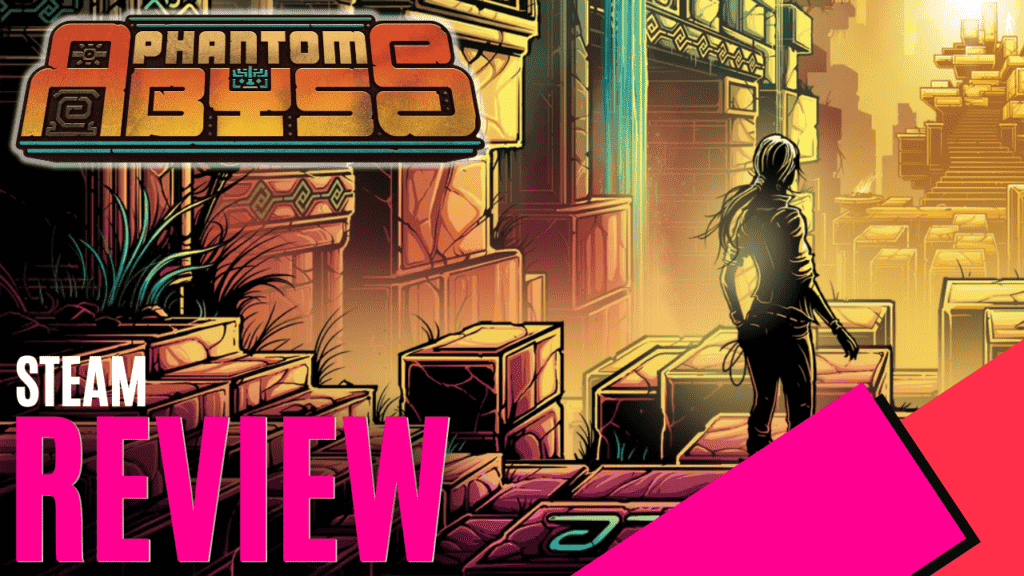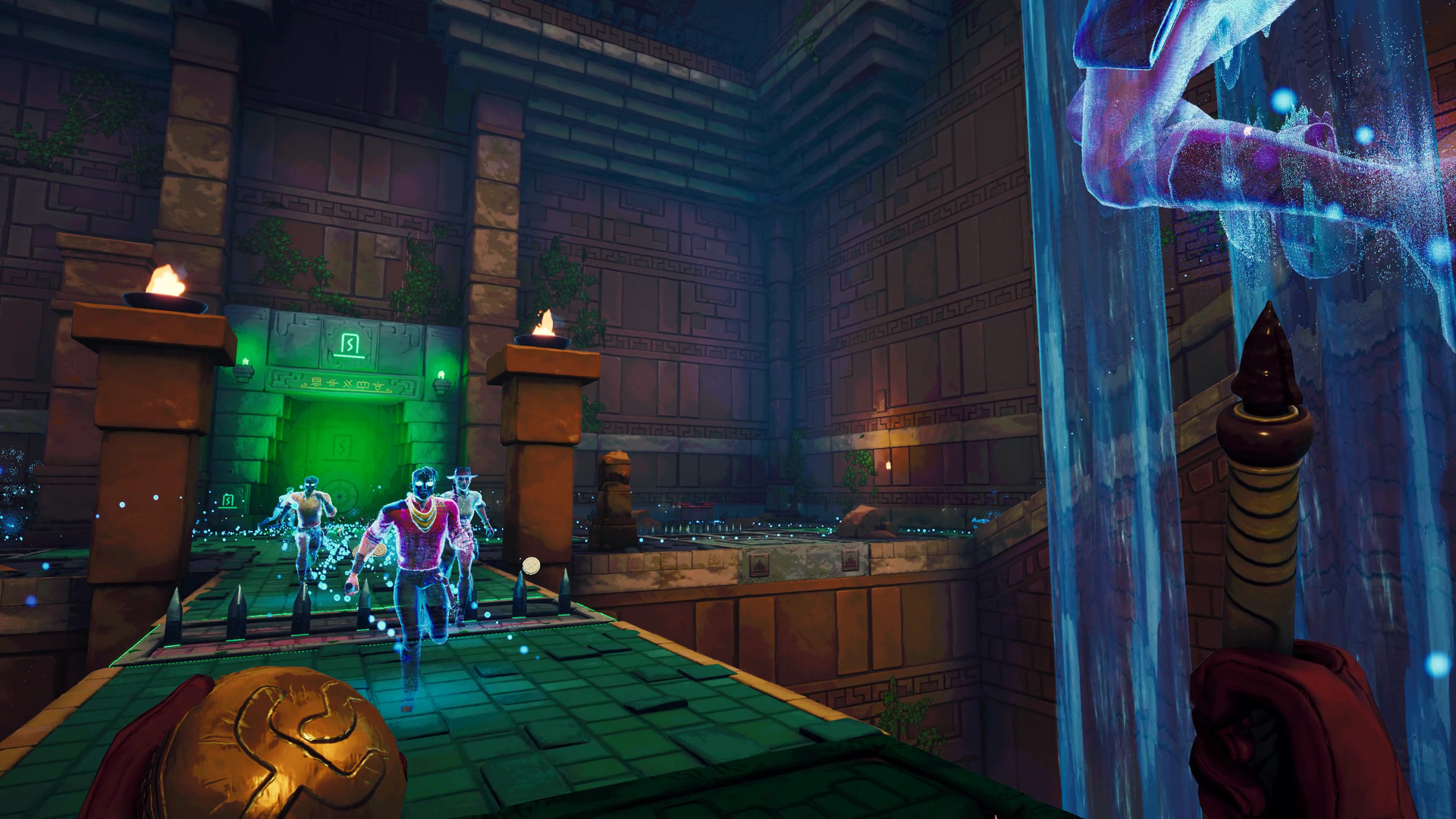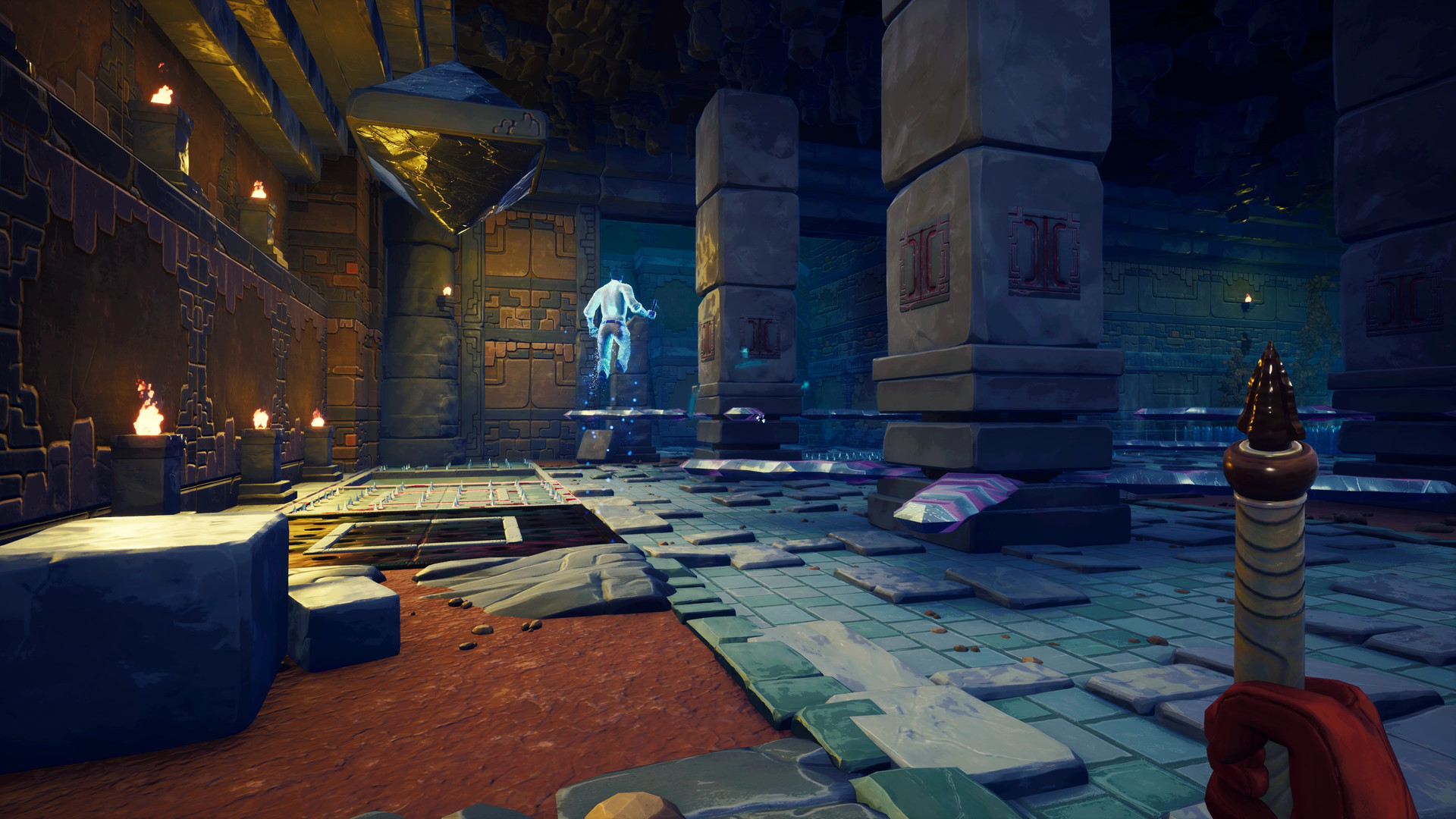
I never considered a cursed temple filled with traps an excellent place to find oneself. Phantom Abyss proves that despite this, exploring trap-filled chambers makes for a pretty good video game. Team WIBY and the champs at Devolver Digital set a platforming challenge that takes relic hunting to the next level, and it’s finally escaping early access.
It’s pretty simple in theory: explore ruins and collect relics, but much easier said than done. Phantom Abyss presents roguelite platforming complete with spikes, saws, pits, and obstacles that crush and/or eviscerate. As a trapped adventurer, players are tasked with dodging, ducking, dipping, and diving through various chambers, seeking relics and glory.
Chambers are procedurally generated, with no two dungeons having the same layout. The overall aesthetic fits nicely into a mystical, Mayan-type vibe. With vibrant colours and a decent amount of colourful lighting, the caverns are deep but not dull, making it easy to see where you’re headed. On most occasions, there’s enough variety of traps and platforming to keep engaging. Though ruin raiding can get repetitive after sinking a few hours into failed stages, the urge to delve into deeper floors and overcome the struggle tends to surpass any desire to give up.
The game is played in first-person view, with simple running, sliding, jumping, and no combat. The whip is the ultimate tool; with an easy-to-use point-and-click aim, a perfect angle can fling adventurers up ledges, crack open treasure containers, and even stop traps with one swift movement.
Moving in this game is immensely satisfying, especially if you score a whip with additional perks or collect a blessing to make the run smoother, like higher jumps or more speed. Curses naturally do the opposite, such as reducing health or slowing movement, which tested my field ability.

Beyond Adventure Mode, there’s Abyss Mode, where only one player can complete a chamber; it leans into the rouge-like aspect, or Daily Mode, for new daily challenges.
The real gem comes down to the namesake of the title, phantoms. Phantom Abyss defines itself as asynchronous multiplayer; other players are technically present in your game world, or at least the ghosts of them.
Phantoms of players are those who died during a specific temple; if you aren’t careful, you become one of these. While you technically can’t interact with others, their presence serves a purpose. Following player apparitions through chambers shows what they did and where to find treasures and can show what trap triggered, ultimately leading to their doom.
Exploring temples alongside remnants of players was much more enjoyable than going it alone, even if it was just in spirit. Once someone conquers the temple, it’s gone, and everyone who passed into the afterlife gets their keys and whips back. Anyone’s win is your win; weirdly cooperative in a way.
Phantom Abyss can be a challenge for the uninitiated. Patience and precision are of the essence. There’s very little room for error; lives are limited, but there’s enough to scrape by so long as you don’t tend to walk headlong into spikes. It wouldn’t be a platformer without my arch-nemesis, fall damage, but with the ability to whip your way out of most situations, it’s not a huge issue.
Chambers are fairly linear. There’s some verticality, but it mostly leads back into a central bath and is easy to navigate, especially with help from our ghostly friends. On death, though, you can lose keys and some decent gear picked up along the way, with the only hopes of retrieval lingering on another player conquering the tomb. Losing all your hard-earned loot can be rough; while it’s to be expected, it often felt like a lot of time was sunk with substantial losses, making some runs feel pointless.

Audio in the abyss remains, in part, a mystery to me. Sometimes, the music would amp up and feel epic and punchy. It was minimal or non-existent in
other moments, and I missed some ambience. The player character and NPC explorers felt devoid, with no voice lines and few indicators of exertion from my dude/dudette. The crack of the whip, the whirs of traps, the sharp shriek of spikes, and the eerie sound of giant guardians chasing me through the temples are where the audio stood out, especially with a headset on.
I had infrequent frame drops, but they were occasionally enough to impact a run. A poorly timed drop was sometimes enough to lead to a missed ledge or getting stabbed. Otherwise, there was no notable crashing or bugs.
Phantom Abyss supports keyboard, mouse, and controller input, and plays mostly fine on each. The accuracy of the whip was easier for me on the mouse. I needed to pull the sensitivity down massively to save myself from getting mad whiplash while moving the camera around.
I wasn’t invested in the overall story, more so in the thrill of delving deeper into ruins. Progress can feel slow; I could sink a decent chunk of time into a run, and it felt like I barely made a scratch. Luckily, the urge to overcome chambers was addictive, and failures just pushed me to want to be better, to avoid an even worse fate, to give up.
Phantom Abyss is an enjoyable expedition, mainly thanks to its unique approach to cooperative gameplay. Archaeological exploration in trap-ridden chambers can be a reasonable risk for a fun reward.

The Good
- Procedurally generated variety
- Effective gameplay loop
- Satisfying movement and whip traversal
The Bad
- Lacks some personality in the playable character and storytelling
- Audio can be overly subdued
- Takes time to pick up momentum








